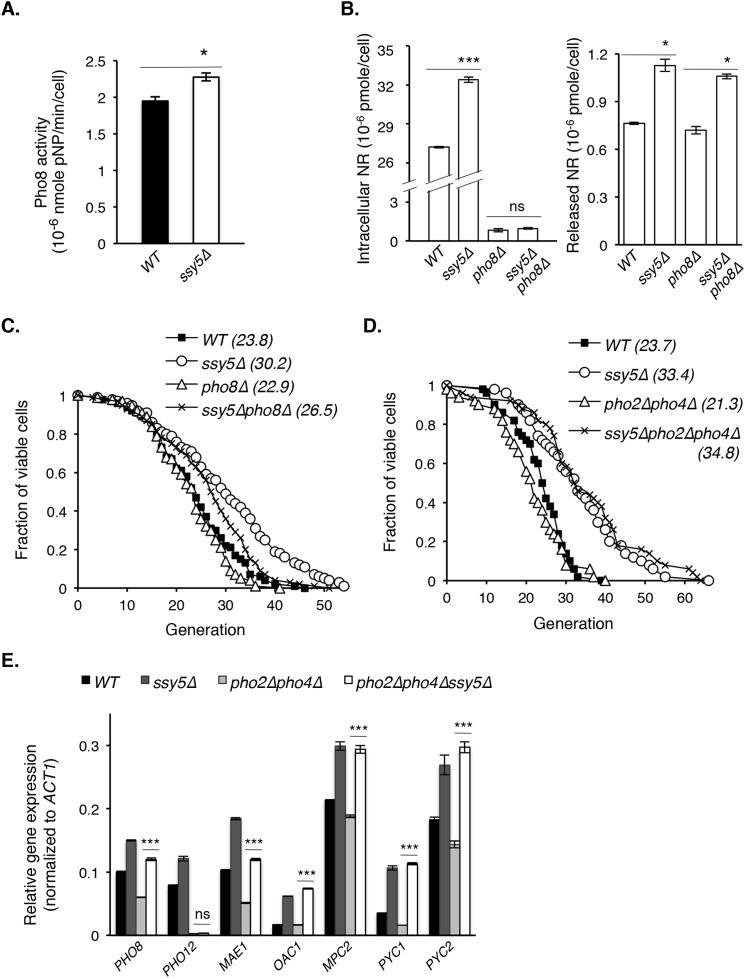FIGURE 4.
Reduced SPS signaling increases the expression of specific PHO signaling and NADH shuttle components independent of PHO2 and PHO4. A, vacuolar Pho8 phosphatase activity is slightly increased in ssy5Δ cells. Results show Pho8 phosphatase activity using para-nitrophenyl phosphate as a substrate for cell lysate derived from WT and ssy5Δ cells. Pho8 activity is reflected by production rate of colorimetric para-nitrophenol (pNP), determined at A400. B, deletion of PHO8 abolishes intracellular NR increase in ssy5Δ cells (left panel) but not released NR, which mostly originates from cytosolic phosphatases (right panel). C, deletion of PHO8 partially abolishes the life span extension in ssy5Δ cells (ssy5Δ versus ssy5Δpho8Δ; p < 0.05). D, deletions of both PHO2 and PHO4, transcription factors that regulate PHO pathway, do not alter the life span extension in ssy5Δ cells. E, ssy5Δ increases gene expression of PHO8 and the malate-pyruvate shuttle components independent of PHO2 and PHO4. Results show relative gene expression (normalized to ACT1) of WT, ssy5Δ, pho2Δpho4Δ, and ssy5Δpho2Δpho4Δ cells determined by qPCR. Data shown are representative of multiple independent experiments. Error bars denote S.D. derived from triplicate samples. The p values were calculated using Student's t test (ns, not significant; *, p < 0.05; ***, p < 0.005) except for C and D (Wilcoxon rank sum test).

